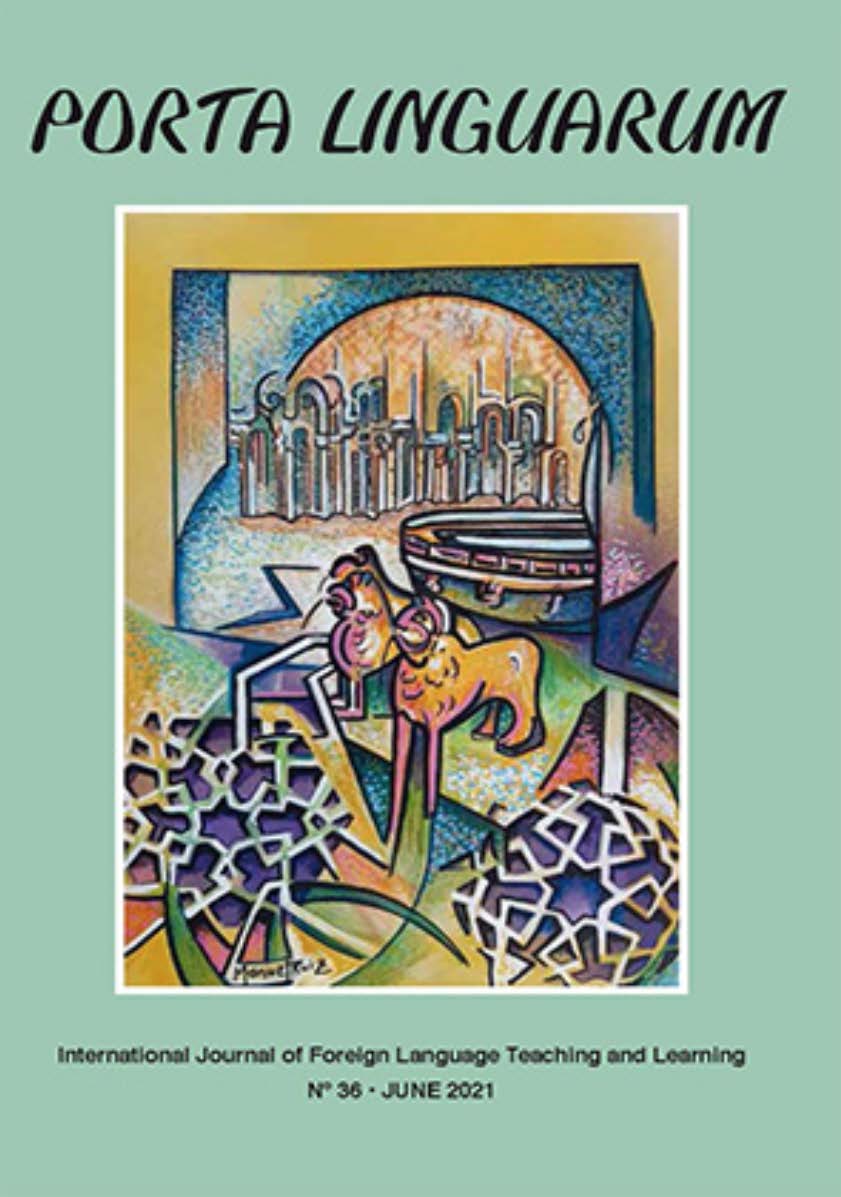Interaction patterns and support for learning in the primary foreign language classroom
DOI:
https://doi.org/10.30827/portalin.vi36.15712Keywords:
Peer interaction, interaction patterns, primary language learning, foreign language learning, support for language learning.Abstract
In this study, both sociocultural and cognitive perspectives are used to investigate how learners in the primary foreign language classroom support each other’s learning during peer oral interaction, and how this is influenced by different interaction patterns. Learners were recorded taking part in 3 spot-the-difference tasks in a year 4 primary class, and Storch’s model of interaction patterns (2002) was used as a framework to classify learner interaction. Transcripts were analysed qualitatively and quantitatively, and show how learners used a variety of strategies to support their partner’s output. It also shows how the majority of learners worked collaboratively, how collaboration increased with task repetition, and how pairs who engaged in collaborative interaction provided most support for their peer. However, other dyads showed less mutuality and engaged little with each other’s contributions, with quantitative analysis showing these learners provided each other with the least support for language learning, as they were unlikely to ask their peer for help, one of the most common strategies used by other dyads.
Downloads
References
Ahmadian, M., & Tajabadi, A. (2017). Patterns of interaction in young EFL learners’ pair work: The relationship between pair dynamics and vocabulary acquisition. The Southeast Asian Journal of English Language Studies 22(3), 98-114. https://doi.org/10.17576/3L-2017-08 98
August, D., & Shanahan, T. (2006). Developing literacy in second language learners: Report of the national literacy panel on language-minority children and youth. Lawrence Erlbaum Associates.
Bigelow, M., & King, K. (2016). Peer interaction while learning to read in a new language. In M. Sato & S. Ballinger (Eds.), Understanding peer interaction: Research directions and pedagogical implications (pp.349-376). John Benjamins.
Butler, Y.G., & Zeng, W. (2014). Young foreign language learners’ interactions during task-based paired assessments. Language Assessment Quarterly 11(1), 45-75. https://doi.org/10.1080/15434303.2013.869814
Butler, Y.G., & Zeng, W. (2015). Young learners’ interactional development in task-based paired-assessment in their first and foreign languages: A case of English learners in China. Education 3-13, 43(3), 292-321. https://doi.org/10.1080/03004279.2013.813955
Chen, W. (2017). The effect of conversation engagement on L2 learning opportunities. EFL Journal 71(3), 329-340. https://doi.org/10.1093/elt/ccw075
Cravo, A., Bravo, C., & Duarte, E. (2015). Metas curriculares de inglês 1º, 2º e 3º ciclos. Porto: Porto Editora. https://www.dge.mec.pt/sites/default/files/Basico/Metas/ING/eb_metas_curriculares_ingles.pdf
Ellis, R. (2003). Task based language learning and teaching. Oxford University Press.
Enever, J. (2015). The advantages and disadvantages of English as a foreign language with young learners. In J. Bland (Ed.), Teaching English to young learners (pp.13-29). Bloomsbury.
Gagné, N., & Parks, S. (2013). Cooperative learning tasks in a grade 6 intensive ESL class: Role of scaffolding. Language Teaching Research 17(2), 188-209. https://doi.org/10.1177/1362168812460818
García Mayo, M.P., & Agirre, A.I. (2016). Task repetition and its impact on EFL children’s negotiation of meaning strategies and pair dynamics: An exploratory study. The Language Learning Journal 44(4), 451-466. https://doi.org/10.1080/09571736.2016.1185799
Garcia Mayo, M.P., & Lázaro Ibarrola, A. (2015). Do children negotiate for meaning in task-based interaction? Evidence from CLIL and EFL settings. System 54, 40-54. https://doi.org/10.1016/j.system.2014.12.001
Garcia Mayo, M.P. (2018). Child task-based interaction in EFL settings. Research and challenges. International Journal of English Studies, 18(2), 119-143. doi: 10.6018/ijes/2018/2/319731
Guk, I., & Kellog, G. (2007). The ZPD and whole class teaching: Teacher-led and student-led interactional mediation of tasks. Language Teaching Research 11(3), 281-299. https://doi.org/10.1177/1362168807077561
Halliwell, S. (1992). Teaching English in the primary classroom. Longman.
Hidalgo, M. (2019).Differences in the task-supported negotiations of younger and older EFL children: From repair into prevention. IRAL, 1-25. https://doi.org/10.1515/iral-2018-0206
Lázaro Ibarrola, A., & Azpilicueta Martínez, R. (2015). Investigating negotiation of meaning in EFL children with very low levels of proficiency. International Journal of English Studies 15(1), 1-21. https://10.6018/ijes/2015/1/203751
Light, P., & Littleton, K. (1998). Cognitive approaches to groupwork. In D.Faulkner, K. Littleton & M. Woodhead (Eds.), Learning relationships in the classroom (pp.171-188). Routledge.
Long, M. (1996). The role of the linguistic environment in second language acquisition. In W.C. Ritchie & T.K. Bhatia (Eds.), Handbook of second language acquisition (pp. 413-468). Academic Press.
Oliver, R. (1998). Negotiation of meaning in child interactions. The relationship between conversational interaction and second language acquisition. Modern Language Journal 82(3), 372-386. https://www.jstor.org/stable/329962
Oliver, R. (2002). The pattern of negotiation for meaning in child interactions. The Modern Language Journal, 86(1), https://doi.org/10.1111/1540-4781.00138
Oliver, R., & Azkarai, A. (2019). Patterns of interaction and young ESL learners. Language Teaching for Young Learners 1(1), 82-102. https://doi.org/10.1075/ltyl.00006.oli
Oliver, R., & Philp, J. (2014). Focus on oral interaction. Oxford University Press.
Oliver, R., Philp J., & Duchesne, S. (2017). Children working it out together: A comparison of younger and older learners collaborating in task based interaction. System 69, 1-16. https://doi.org/10.1016/j.system.2017.08.001
Oliver, R., Philp, J., & Mackey, A. (2008). The impact of teacher input, guidance and feedback on ESL children’s task-based interactions. In J. Philp, R. Oliver & A. Mackey (Eds.), Second language acquisition and the young learner: Child’s play?(pp.131-147). John Benjamins.
Philp, J., & Duchesne, S. (2016). Exploring engagement in tasks in the language classroom. Annual Review of Applied Linguistics, 36, 50-76. https://doi.org/10.1017/S0267190515000094
Philp, J., Mackey, A., & Oliver, R. (2008). Child’s play? Second language acquisition and the younger learner in context. In J. Philp, R. Oliver & A. Mackey (Eds.), Second language acquisition and the younger learner: Child’s play? (pp.3-26). John Benjamins.
Pinter, A. (2007). Some benefits of peer-peer interaction: 10-year old children practising with a communication task. Language Teaching Research 11(2), 189-207. https://doi.org/10.1177/1362168807074604
Sato, M., & Ballinger, S. (2012). Raising language awareness in peer interaction: A cross-context, cross-methodology examination. Language Awareness 21(1-2), 157-179. https://doi.org/10.1080/09658416.2011.639884
Storch, N. (2002). Patterns of interaction in ESL pair work. Language Learning 52(1), 119-158. https://doi.org/10.1111/1467-9922.00179
Tan, L., Wigglesworth, G., & Storch, N. (2010). Pair interactions and mode of communication. Australian Review of Applied Linguistics 33(3), 27.1-27.24. https://doi.org/10.2104/aral1027
Tognini, R., Philp, J., & Oliver, R. (2010). Rehearsing, conversing, working it out. Australian Review of Applied Linguistics, 33(3), 28.1-28.25. https://doi.org/10.2104/aral1028



















